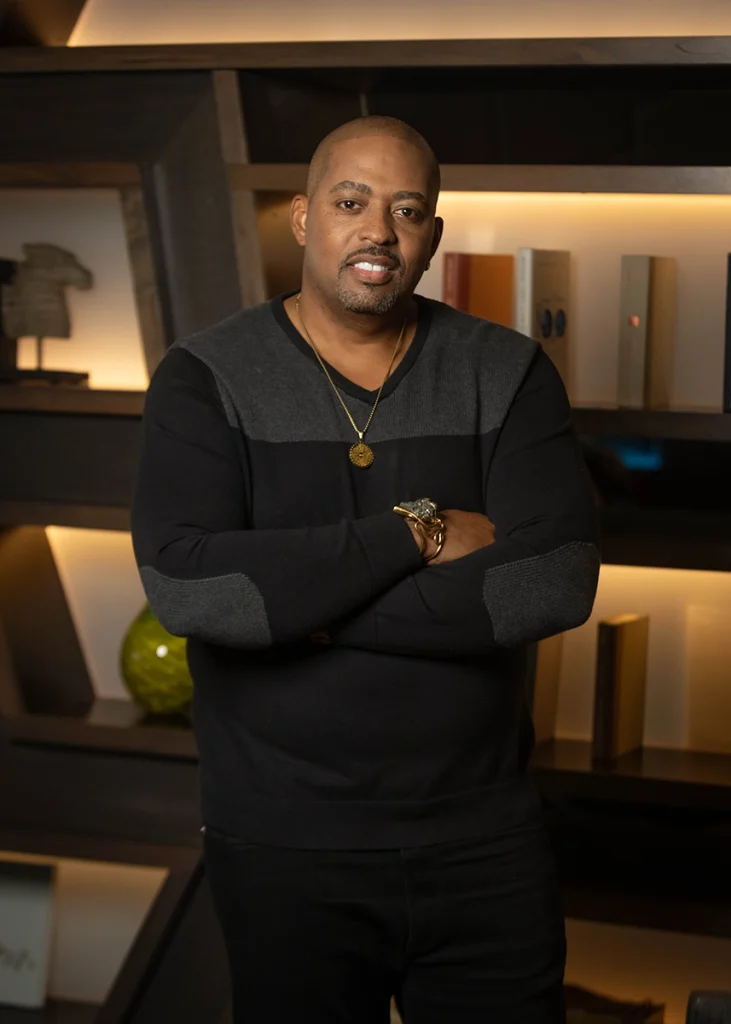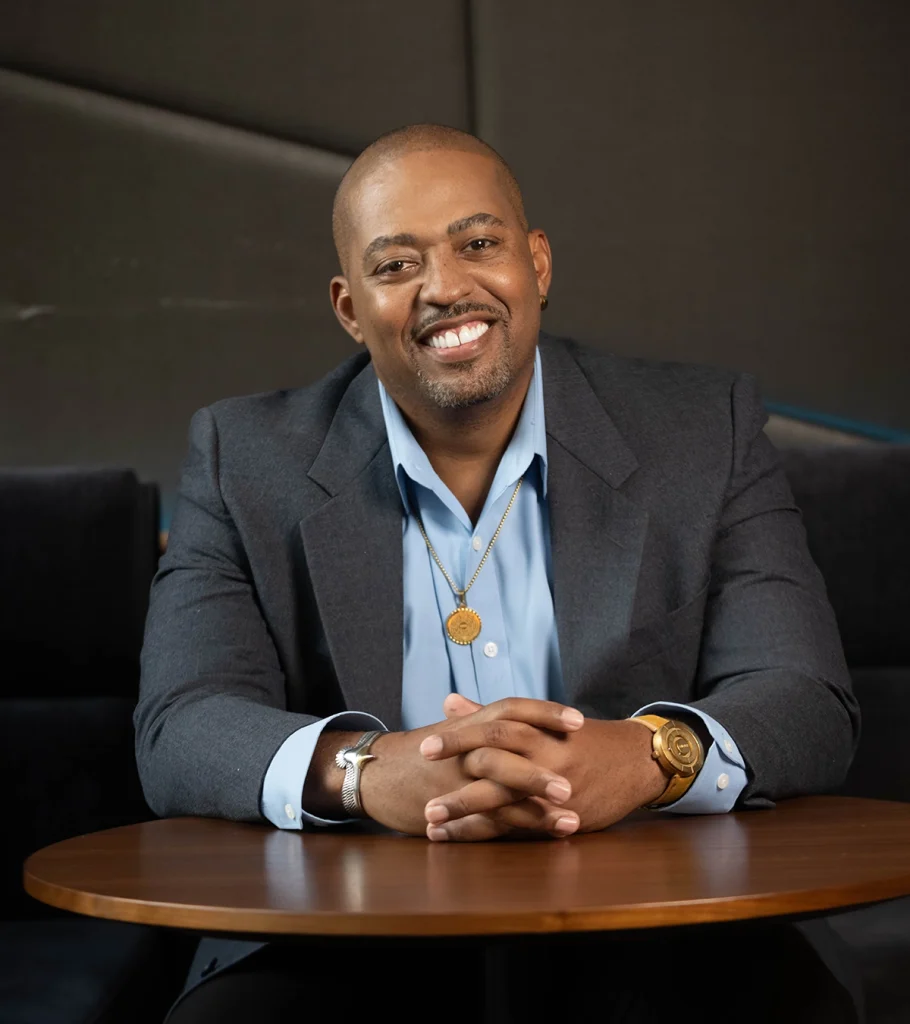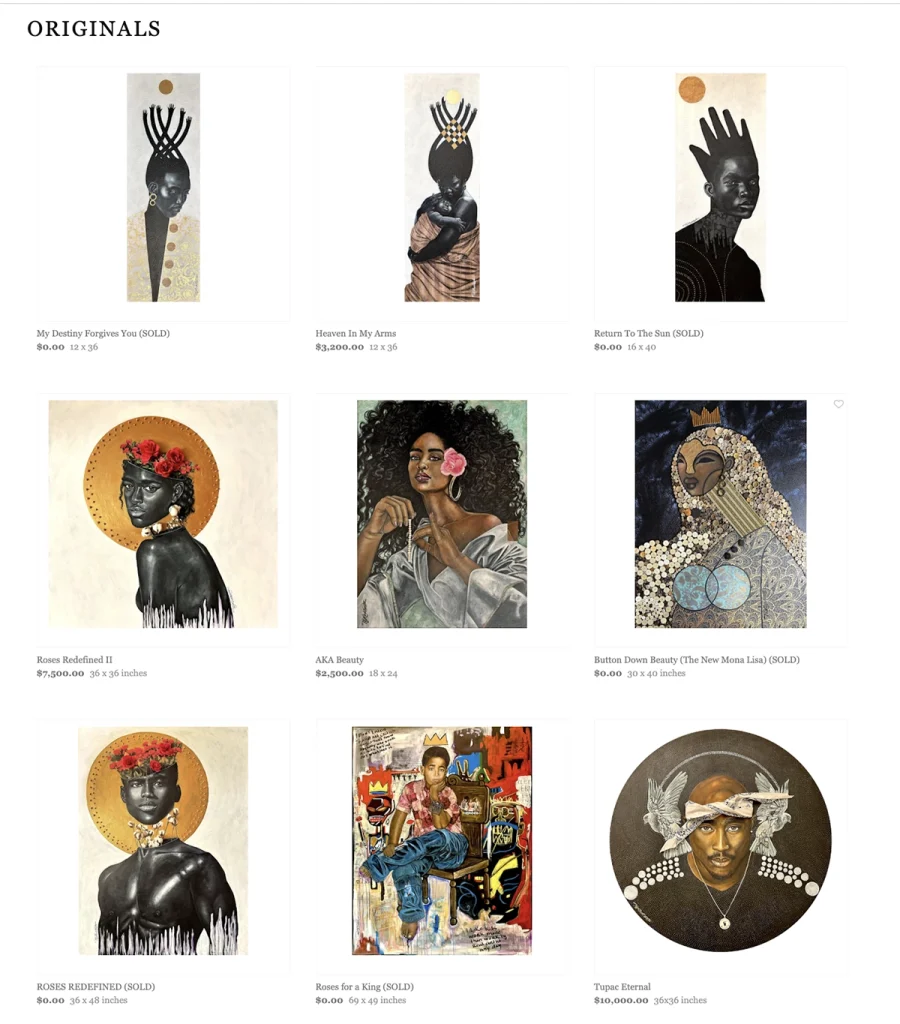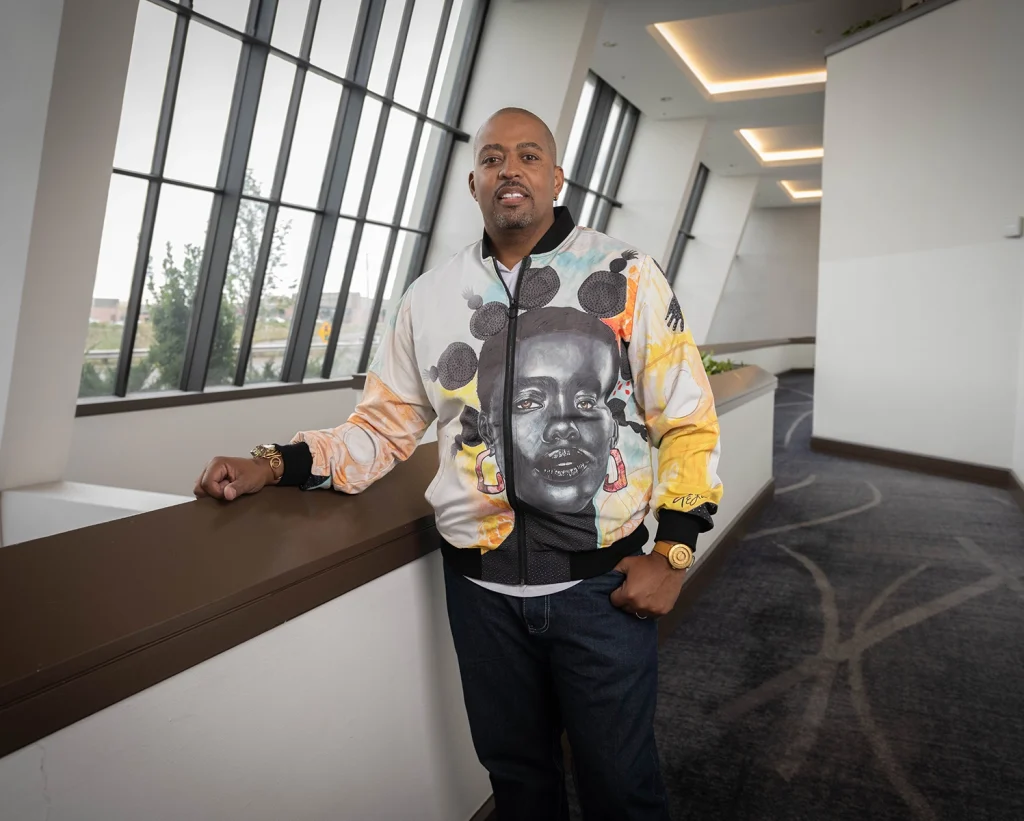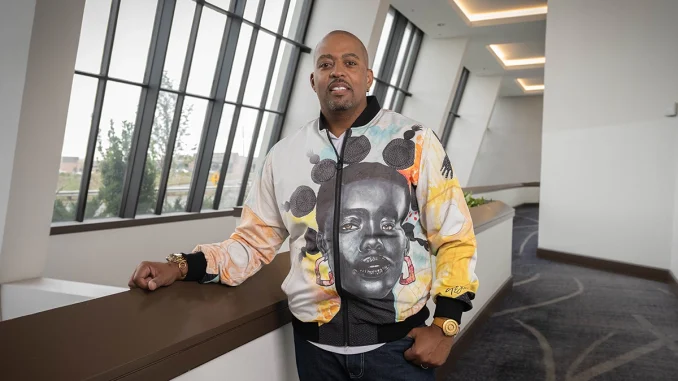
By Staff
Dr. Thomas Elias Lockhart III has built a remarkable career as an internationally recognized fine artist whose work embodies resilience, faith, and imagination. A self-taught painter who began his journey in graphic design, Lockhart transformed his passion into a vocation that now spans museums, galleries, documentaries, and private collections across the globe. Known for his vibrant use of color and layered storytelling, he approaches each canvas as both historian and visionary—painting the past, illuminating the present, and planting seeds for the future. With collectors ranging from cultural icons to professional athletes, and with a deep commitment to mentoring young people, Lockhart has become more than an artist—he is a cultural storyteller and guide, using his craft to heal, inspire, and shape the conversations of our time.
Dr. Lockhart, your work is celebrated for its vibrant colors and layered storytelling. How do you see art as a pathway to healing and wellness for both the artist and the viewer?
Art, in many ways, is the silent language of the soul. It surrounds us daily—whether we recognize it or not—and has the power to speak when words fail. For me, every brushstroke is both a release and a restoration. It allows me to process history, memory, and emotion in ways that words cannot capture. I see art as history in motion, connecting the past with the present and carrying us toward the future. For the artist, creating can be deeply therapeutic, a way to unburden the spirit. For the viewer, art has the ability to calm, to provoke thought, and to heal by creating moments of stillness or revelation. When art is allowed into our lives with intention, it can be one of the greatest healers of the human experience.
You’ve spoken about inspiring young people to embrace creativity. Why do you believe it is essential to nurture the imagination of the next generation, especially in today’s world?
The imagination of young people is the seedbed of possibility. A child who is encouraged to explore their creativity is a child who learns to see beyond limitations. In a world where distractions are constant and negative influences are so easily accessible, nurturing creativity is more than just a pastime—it is a necessity. Creativity helps build confidence, problem-solving skills, and resilience. Every young person deserves to have someone who invests in their gifts, who shows them that their ideas have value and their voice matters. Sometimes it only takes one caring mentor or one meaningful experience with art to awaken something extraordinary. My greatest joy is planting those seeds and watching young people discover a world within themselves that they didn’t know existed.
Your art has traveled from museums and galleries to Netflix and PBS, reaching diverse audiences. How do you hope your work influences conversations about culture and community?
My hope is that my art serves as both a mirror and a window. A mirror that allows people to see themselves—our joys, our struggles, our shared humanity—and a window that opens onto possibilities for what our communities can become. When my work appears in places like Netflix or PBS, it extends beyond the walls of a gallery and enters the living rooms of everyday people. That accessibility matters. I want my images to spark dialogue about who we are, where we’ve been, and where we are going. Culture is not static—it is living, breathing, and evolving. My role as an artist is to contribute to that conversation by offering imagery that challenges, inspires, and ultimately compels us toward positive change.
Many of your collectors are athletes, entertainers, and leaders. What do you think it is about your imagery that resonates so strongly across such different worlds?
At its core, art is about connection. I believe that athletes, entertainers, and leaders are drawn to my work because they see parts of their own journey reflected in it. These are individuals who live in the public eye, but who also grapple with the same search for meaning, purpose, and legacy as anyone else. My imagery speaks to that inner dialogue—the desire to be more than ordinary, to leave something lasting behind. Whether it’s a bold use of color or a story embedded in the layers of a painting, I think they find in my work a reflection of their own ambition to transcend mediocrity and impact the world in meaningful ways.
You are self-taught, yet your career has garnered international recognition and numerous awards. How has your personal journey of discipline and self-discovery shaped the way you define success?
Being self-taught requires a level of discipline and faith that often goes unseen. I didn’t have the structure of a formal program to guide me, so I had to build my own. Every canvas became both a classroom and a teacher. I spent years researching, experimenting, and pushing the limits of what I thought I could do. For me, success is not simply measured in awards or sales, but in the value my work carries. Success means creating something that resonates deeply enough that people seek it out because they feel it has meaning in their lives. It is knowing that the long nights spent sketching, studying, and perfecting techniques have led to works that connect to others on a profound level. My journey has taught me that true success comes when your work enriches not just yourself, but also the world around you.
You’ve credited artists such as Salvador Dalí, Thomas Kinkade, Paul Goodnight, and George Hunt as influences. How have these masters guided your own approach to creativity and originality?
Each of these artists embodies a mastery that transcends time. Salvador Dalí’s surrealism taught me the power of imagination without boundaries. Thomas Kinkade’s use of light revealed how something as subtle as a glow could create mood and evoke emotion. Paul Goodnight and George Hunt inspired me through their unapologetic celebration of culture, community, and identity. What connects all of them for me is not just their style, but how their work made me feel—how it lingered in my spirit long after I had seen it. That is the impact I strive for in my own work. I don’t want to simply create something visually pleasing; I want to create an experience that moves people, that invites them into a dialogue between themselves and the canvas.
Beyond accolades, what do you want your legacy to be—not just as an artist, but as a mentor, educator, and cultural voice?
Legacy, for me, is not about being remembered for what I did, but for how what I did made people feel. I want those who encounter my art to walk away different than when they arrived—more inspired, more hopeful, more determined to pursue their own path. As a mentor and educator, I hope to ignite creativity in others so they, too, can discover their gifts and share them with the world. And as a cultural voice, I want my work to serve as both testimony and guidepost—a reminder that art is not a luxury but a necessity, a force that shapes who we are and who we can become. If, in the end, people say my work gave them purpose, peace, or a sense of completion, then I will have fulfilled my calling.
Find out more and purchase art at Website
https://www.lockhartgallery.com/about-us



